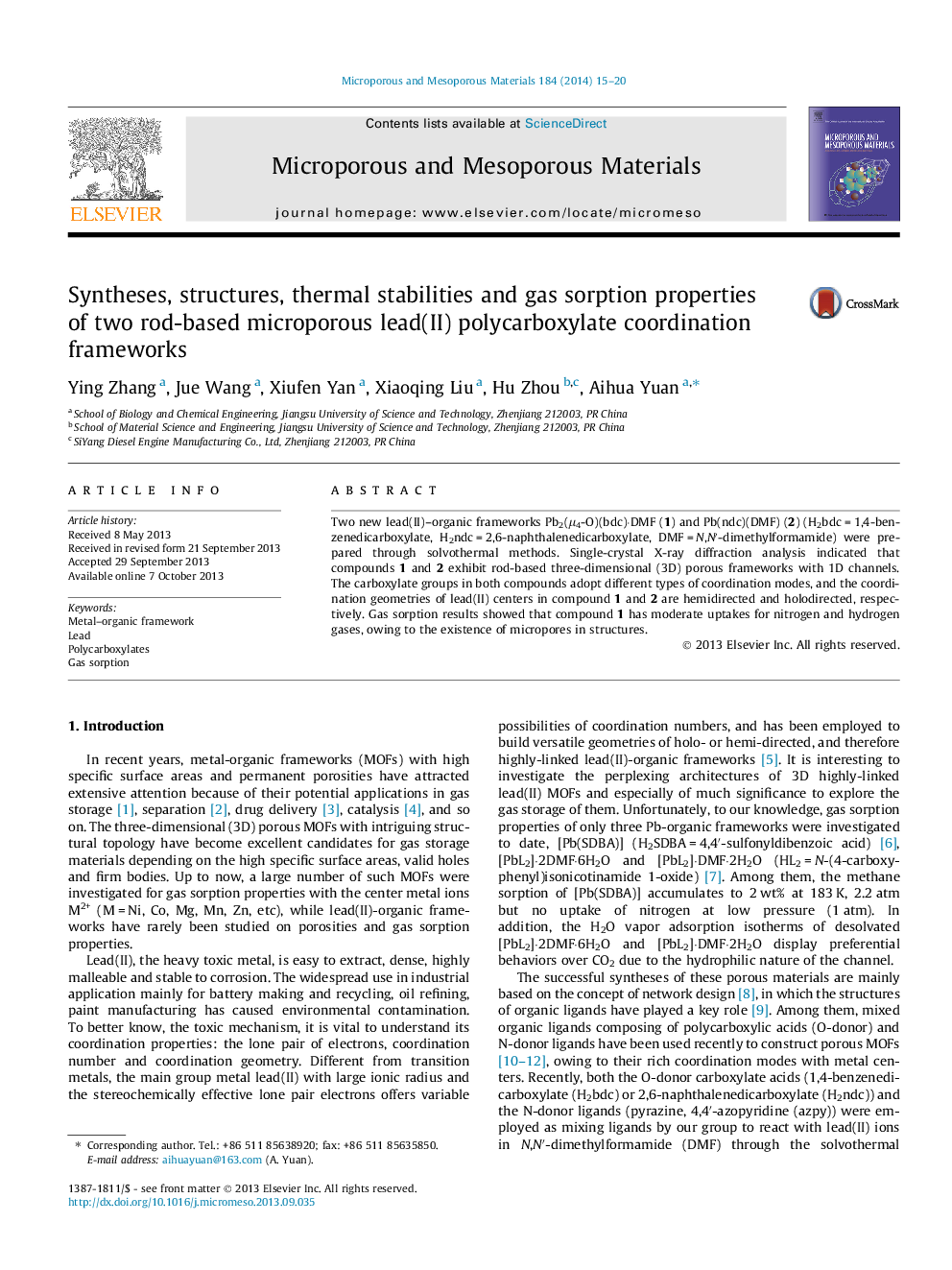| Article ID | Journal | Published Year | Pages | File Type |
|---|---|---|---|---|
| 73299 | Microporous and Mesoporous Materials | 2014 | 6 Pages |
•Two new lead(II)-polycarboxylic frameworks were synthesized through solvothermal methods and characterized.•Both compounds adopt rod-based 3D porous frameworks with 1D channels and exhibit high thermal stabilities.•Compound 1 has moderate nitrogen and hydrogen uptakes due to the presence of micropores in the structure.
Two new lead(II)–organic frameworks Pb2(μ4-O)(bdc)·DMF (1) and Pb(ndc)(DMF) (2) (H2bdc = 1,4-benzenedicarboxylate, H2ndc = 2,6-naphthalenedicarboxylate, DMF = N,N′-dimethylformamide) were prepared through solvothermal methods. Single-crystal X-ray diffraction analysis indicated that compounds 1 and 2 exhibit rod-based three-dimensional (3D) porous frameworks with 1D channels. The carboxylate groups in both compounds adopt different types of coordination modes, and the coordination geometries of lead(II) centers in compound 1 and 2 are hemidirected and holodirected, respectively. Gas sorption results showed that compound 1 has moderate uptakes for nitrogen and hydrogen gases, owing to the existence of micropores in structures.
Graphical abstractTwo new lead(II)-polycarboxylic frameworks adopt rod-based 3D structures with 1D channels and exhibit high thermal stabilities. The existence of micropores in the structure of compound 1 is responsible practically for moderate nitrogen and hydrogen uptakes.Figure optionsDownload full-size imageDownload as PowerPoint slide
